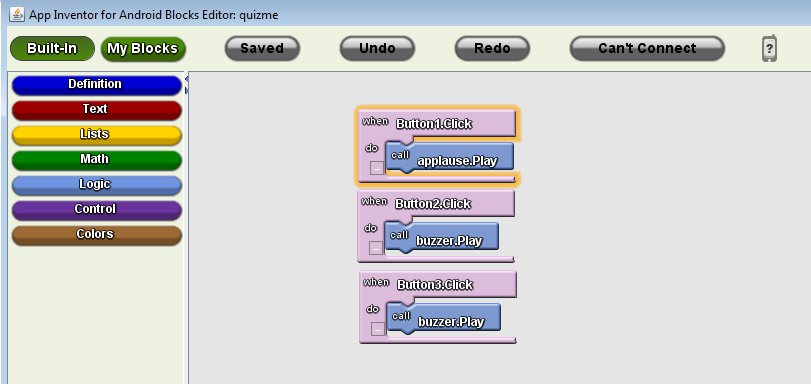September 27, 2010

With Google’s beta release of Android App Inventor over the summer came the promise that “normal people” would suddenly be able to crank out high quality Android apps without writing a single line of code. App Inventor is a visually based development environment, so rather than write code, developers use a series of icons to create apps. As with most Google products, App Inventor is “in the cloud,” meaning you use it through your browser, not a program you install onto your computer.
Google seems to think App Inventor is a great tool for educators. Apparently, the idea is that teachers will use App Inventor to write educational apps tailored specifically to their school’s curriculum. Then during class, students will pull out their Droid’s, Evo’s, and Galaxy’s, and they they’ll get to work studying with their cell phones. App Inventor is still in beta, just as gmail and google voice were before it. That means you have to get on a waiting list just to get access.
TPM recently obtained access, and it turns out that Android App Inventor is a little tougher to use than advertised. If you’ve got programming experience but don’t know Java, you will certainly have a head start. But if you don’t know anything about if-then conditionals, for-next loops or any other simple coding concepts, the learning process will be slow. Expect to spend a lot of hours depending on how quickly you pick up on these sorts of things.

TPM did put together an extremely simple proof of concept math app, which involved a single multiple choice question about matching a parabola with its equation. It became clear that anything more sophisticated would have been doable, but would have required a significant investment of time. Are “normal people” like teachers capable of developing with App Inventor? Sure. But if Google is serious about using this as a tool for education, it’s going to need to develop some kind of training program that’s more in-depth than its brief current online tutorial system for App Inventor.
The novelty is definitely there, and Android apps could certainly be a fun way to learn math. The question is, how practical is it? Virtually all school districts ban cell phones during school hours as they are a major distraction to students. Even if a school board were to reverse that policy, Android phone ownership is nowhere near universal among teens. Google’s App Inventor for educators page talks of purchasing classroom sets of phones for students since the Android emulator is slow. Most math teachers will tell you it’s difficult to obtain a classroom set of Texas Instruments graphing calculators. It’s hard to imagine how many times more difficult it will be to convince the principal to buy a classroom set of phones.

App Inventor does have great promise, and Google should be applauded for its efforts to bring app development to individuals with creativity and technology skills but without formal programming training. With all the talk of Android tablets soon to be released, perhaps someone will release an iPod touch-type of device for Android that is appropriate for the classroom and is an easier sell to schools than phones in class. Until then, there are a number hurdles for App Inventor to clear before it will become a widespread educational tool.

